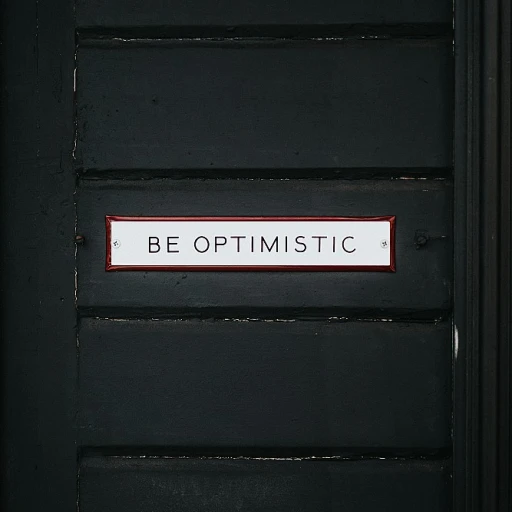
Understanding the Concept of Skills Inventory
Defining Skills Inventory: A Foundation for HR Success
A skills inventory, at its core, functions as a comprehensive organizational tool that catalogs the skills and competencies of the workforce. For companies aiming to align their business goals with employees' capabilities, a well-maintained skills inventory is crucial. This system allows businesses to effectively assess skills, recognize gaps, and facilitate career growth. Understanding employees' skill sets is essential for effective skills management. By maintaining a detailed skill inventory, companies can evaluate their current talent pool and identify skills gaps. This leads to more informed decisions regarding training, development, and future workforce planning. Moreover, an inventory assessment essentially aids in identifying leadership qualities and potential leadership skills, ensuring the alignment of employee development with strategic objectives. Skills inventories can streamline the learning development process by highlighting areas that require immediate attention. In the realm of human resources analytics, a skills inventory serves as a pivotal component by offering a data-driven approach to manage and develop employee skills. As workplace trends evolve, a skills inventory becomes integral in adapting to changing environments, helping organizations remain competitive and agile. For more insights on enhancing workforce potential, consider leveraging skills management software to create an organized, future-ready skills inventory.The Role of Skills Inventory in HR Analytics
The Significance of Skills Inventory in Human Resource Analytics
In any modern business setting, having a thorough understanding of the skills and capabilities of employees is not just beneficial—it's essential. A well-developed skills inventory becomes a cornerstone for HR analytics initiatives to thrive. By systematically organizing data related to employee skills, a company can adeptly link skills assessments with overarching business goals. This alignment helps organizations understand and bridge skills gaps through targeted training and development programs. A detailed skills inventory is invaluable for performing accurate skill gap analyses. These analyses spotlight areas for potential workforce improvement. When challenges arise, such as evolving market demands or shifting company objectives, identifying skill gaps quickly becomes pivotal to maintaining competitiveness and empowering future growth. Moreover, inventory skills play a crucial role in talent management practices. With granular insights into employees' soft skills and technical competencies, HR teams can effectively guide career development pathways, fostering robust employee engagement and retention. Every piece of inventory assessment informs leadership teams about current and future workforce needs, ensuring the company strategically addresses succession planning. With these insights, organizations can better prepare for transitions in leadership roles, ensuring the seamless achievement of business goals. The benefits of skills inventories extend to tailored learning and development plans, where skills management insights can highlight employees' learning preferences and needs. This facilitates the creation of personalized career progression opportunities, contributing to enhanced employee satisfaction and productivity—a fundamental aspect for businesses aspiring to thrive in competitive landscapes. The potential of utilizing a comprehensive skills inventory within HR analytics for empowering companies on multiple fronts cannot be overstated. To learn more on how HR analytics can be a powerful tool in succession planning, visit unlocking the potential of succession planning analytics.Building an Effective Skills Inventory
Steps to Building a Robust Skills Inventory
Creating a skills inventory is a crucial part of workforce management that allows companies to fully leverage the talents of their employees. Here, we'll explore the steps needed to systematically build a skills inventory that aligns with your business goals.Identify and Categorize Necessary Skills
Start by conducting a skills assessment to identify the hard and soft skills that are essential for your company's success. This involves collaborating with leadership across departments to determine the employee skills required to meet strategic objectives. Categorize skills into technical, soft skills, and leadership skills, thereby creating a comprehensive database that reflects the varied demands of the company.Perform a Skills Gap Analysis
Once the essential skills are identified, carry out a skills gap analysis to determine where current capabilities fall short of company needs. This process involves measuring employee skills against the target skills, helping to uncover skill gaps and determine the areas needing improvement. Understanding these gaps is critical for learning development and aligns with future talent acquisition goals.Utilize a Skills Matrix
To effectively map out and visualize skills inventories, employ a skills matrix. This tool assists in tracking employee skills and facilitating data-driven decisions. It displays skills proficiency levels across the workforce and assists in pinpointing areas suitable for growth and development.Regular Inventory Assessment and Updates
A skills inventory is a living document that requires periodic updates and reassessment to remain relevant. As the company's goals evolve, so too should the skills inventory to ensure alignment with business objectives. Regular inventory skills assessments help in adapting to changes and preparing for future demands. Building an effective skills inventory not only addresses immediate skill gaps but also plays a pivotal role in preparing your workforce for the challenges of tomorrow. As a part of an integrated talent management strategy, it can be instrumental in employee development and aligning training programs with both individual and organizational goals. For more detailed insights on crafting effective performance review goals and aligning them with skills management, visit HR Analytics Trends Blog.Leveraging Skills Inventory for Talent Management
Unlocking Employee Potential with Skills Inventories
Leveraging a skills inventory can be a powerful tool in talent management, enabling organizations to unlock employee potential and align with strategic business goals. By properly managing employee skills, companies can pinpoint both strengths and skill gaps within their workforce. This, in turn, facilitates targeted training and learning development opportunities to fill those gaps.
A well-structured skills inventory can aid in mapping out career paths for employees. By assessing skills through detailed inventory assessments, organizations can offer personalized career development plans, enhancing employee engagement and retention. Skills inventories allow businesses to visualize the skills matrix and adjust their workforce strategies to establish a proactive approach towards skills management.
Furthermore, identifying skills gaps and performing gap analysis can provide insights into what is needed for future roles and leadership skills within the company. This empowers organizations to create tailored training programs that focus not only on technical abilities but also on the development of crucial soft skills. This comprehensive approach supports a company’s ability to adapt to evolving industry demands.
Effective leverage of skills inventories demands consistent review and update procedures. Regular assessments ensure the relevance of employee skills and help organizations stay aligned with changing business needs. As companies navigate the future of work, having a robust skills inventory is essential to foster continuous learning and development, ultimately driving success and growth.
Challenges in Implementing a Skills Inventory
Navigating Implementation Challenges in Skills Inventories
Building a skills inventory might seem like a straightforward task, yet it often comes with its own set of challenges. Understanding these roadblocks and knowing how to navigate them is crucial in creating a comprehensive skills inventory. First and foremost, one of the significant challenges is ensuring accurate data collection. Gathering reliable data about employee skills requires robust processes that go beyond mere assumptions. It involves comprehensive skills assessments and leveraging data analytics to accurately capture the skills landscape within an organization. Another common challenge is aligning the skills inventory with broader business goals and objectives. Without a clear alignment, the inventory might not deliver the intended value. Organizations need to consistently revise their skill matrices and inventory skills to make sure they remain relevant to an ever-evolving business environment. Skill gaps are another hurdle. Identifying skill gaps is just the beginning. The real challenge lies in developing a targeted learning and development plan to bridge these gaps effectively. Companies must focus on continuous assessment and regular updates of skill inventories to stay ahead. Additionally, soft skills and interpersonal skills often get overshadowed by technical skills. However, assessing and incorporating these skills into the inventory is vital for holistic skills management and effective talent development. Leadership skills are just as crucial. Many organizations struggle to create a leadership pipeline due to inadequate assessment of leadership potential in their workforce. Utilizing skills inventories to identify and develop future leaders helps in tackling this issue. Finally, creating employee buy-in can be difficult. Employees might be skeptical or concerned about such assessments impacting their careers. Clear communication about how skill inventories help with personal career growth and professional development can mitigate these apprehensions. By recognizing and planning for these challenges, a company can not only strengthen its skills inventory but also harness it as a powerful tool for future talent management. Skills inventories are more than just data repositories; they are strategic assets for driving business success.Future Trends in Skills Inventory and HR Analytics
Emerging Technologies and Their Impact
The future of skills inventory in HR analytics is closely tied to technological advancements. As companies increasingly adopt AI and machine learning, these technologies are expected to revolutionize how skills data is collected and analyzed. AI can help in assessing skills more accurately, identifying skill gaps, and predicting future skill requirements based on industry trends. This will enable organizations to align their workforce capabilities with business goals more effectively.
Personalized Learning and Development
With the rise of personalized learning platforms, employees can now engage in tailored training programs that address their specific skill gaps. This approach not only enhances individual career development but also supports the company’s overall talent management strategy. By integrating skills inventories with learning development systems, organizations can create a dynamic skills matrix that evolves with the workforce.
Focus on Soft Skills and Leadership Development
While technical skills remain crucial, there is a growing emphasis on soft skills and leadership skills. Future skills inventories will likely place greater importance on these areas, helping companies to foster a more adaptable and resilient workforce. Leadership development programs will be key in preparing employees for future roles, ensuring a steady pipeline of talent ready to meet evolving business challenges.
Challenges and Opportunities Ahead
Implementing a comprehensive skills inventory is not without its challenges. Companies may face obstacles in data collection and integration, particularly when dealing with diverse employee skills across global teams. However, these challenges also present opportunities for innovation in skills management. By leveraging advanced analytics and continuous inventory assessment, organizations can create a robust framework for future growth.
Conclusion
As we look to the future, the role of skills inventories in HR analytics will continue to expand. By embracing new technologies and focusing on holistic employee development, companies can ensure they are well-equipped to meet the demands of tomorrow’s workforce. The journey towards a comprehensive skills inventory is ongoing, but with the right strategies, it can significantly enhance workforce potential.












